National park Braslav Lakes
Braslavkie Ozera
Accommodation facilities in national park «Braslavkie Ozera»:
Excursions with attending National park Braslavkie Ozera:
General information
National park Braslavskie Ozera - one of the youngest, but truly unique and well-known far beyond the country. It is located in the extreme North-West of the Republic of Belarus in the province with the poetic name «Belarusian Poozerie». At first glance, the region is blessed with incredible beauty of the glacial landscapes and endless surface of numerous lakes, a wonderful combination which create a unique recognizable image of the Braslav region.
National Park Braslavskie Ozera is the standard landscape of Baltic Poozerie districts, which emerged as the result of the last glaciation. After the melting of Poozersky glacier, which covered the territory of Belarus 15-14 thousand years ago, formed deep lake basins with a complex rugged coastline and labyrinths of canals and bays, interspersed with hills, unique forms of the young glacial relief - rocks and lakes. This is a unique national park, which has no equal among the CIS countries.National park is fully located within Braslav district Vitebsk region and covers an area of 64.4 thousand hectares.
The background to the creation of National park takes us back to the XIX century when there appeared first summer houses for aristocrats - the estate of the eminent birth Plattery, Wawzeckie. In the early 20th century Braslav was the leisure centre staff and students from Vilnius and Warsaw, which was the impetus for the opening of summer recreation centers, open sports grounds, to 30th years there were three yacht club hosted sailing competitions, festivals and exhibitions. Prevented the rapid development of the Second World war, during which the tourist infrastructure was destroyed. Only in 1970 there was organized the zone of Republican significance «Braslav».
The state nature protection institution «National park Braslavskie Ozera» was established by the Decree of the Cabinet Of Ministers of the Republic of Belarus of August 10, 1995 ¹440 in order to preserve the natural complex of Braslav lakes group as a standard of natural landscapes, storage of the genetic fund of flora and fauna of the Belarusian Poozerie and its use in the process of environmental, scientific, educational, tourist, recreational and health activities.
Water system of national park Braslavskie Ozera
Lakes - are a real treasure of national park Braslavskie Ozera. It's the largest lake region of Belarus, which has about 300 lakes and more than 20 rivers with tributaries. Within boundaries of national park there are 74 lakes, which occupy about 17 % of its territory.
Braslavskiye lakes is a visiting card of Belarus, one of the main tourist brands of the country. This is the national treasure of the country, which requires protection and respect.
Among lakes of national park there are several groups: Obabye group in the North, Braslav in the central part and Boginskaya in the South. Obabye group includes mostly small, forest lake Obabye, Bolshaya and Malaya Yelnya, Dubrok, Medvedno, Voyity and others. Boginskaya group includes lakes: Boginskoe, Dolgoe, Albenoskoe, Vysokoe, Zagornoye is ponds with beautiful beaches and islands, which gained notoriety fish. Braslav lakes group is the largest lake group in Belarus, which has more than 30 lakes connected by the Druyka river. This group includes the largest and deepest lakes in Braslav: Drivyaty, Nespish, Nedrovo, Strusto, Snudy, Poteh, Voiso, Voloso North and Voloso South.
Significantly enhances the beauty of whimsical lace lakes - resulting from glaciation differences in heights between the tops and the bottom of the basins, which can reach 40-60 meters. With the lookouts eyes open pagai mind-blowing, breathtaking!
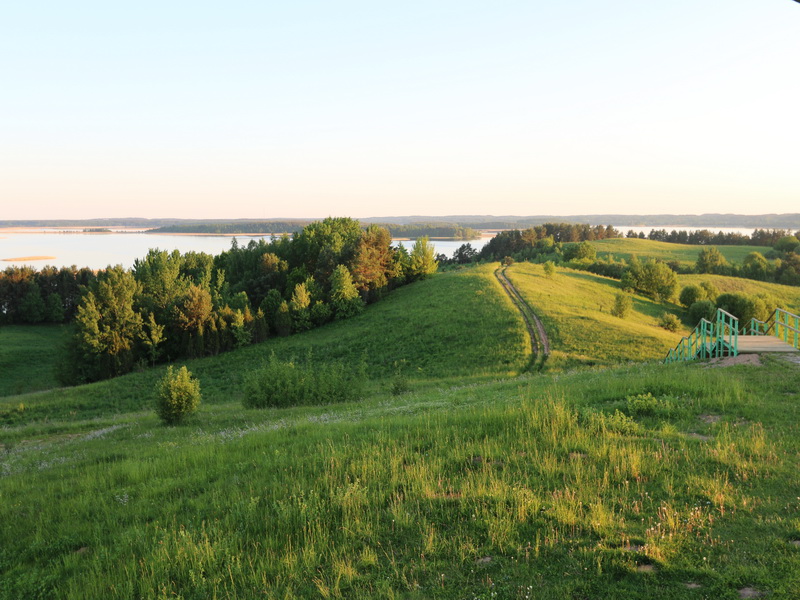
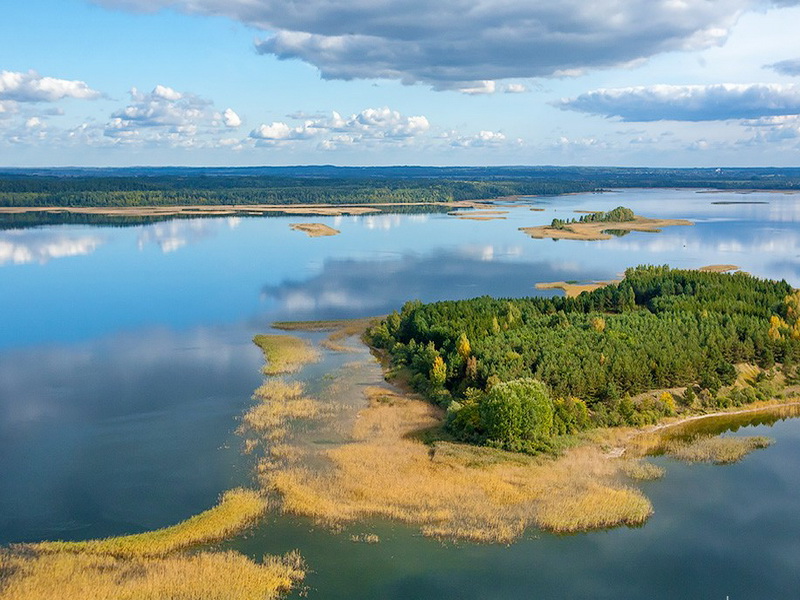
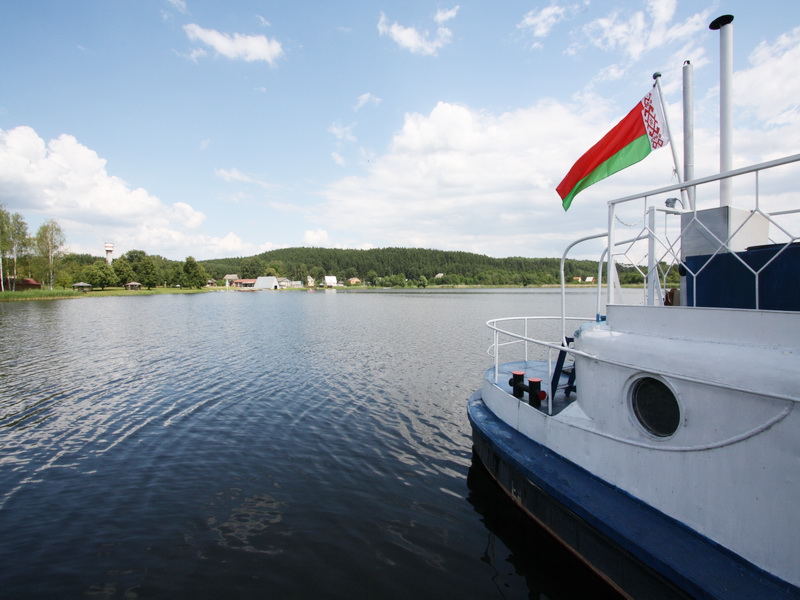

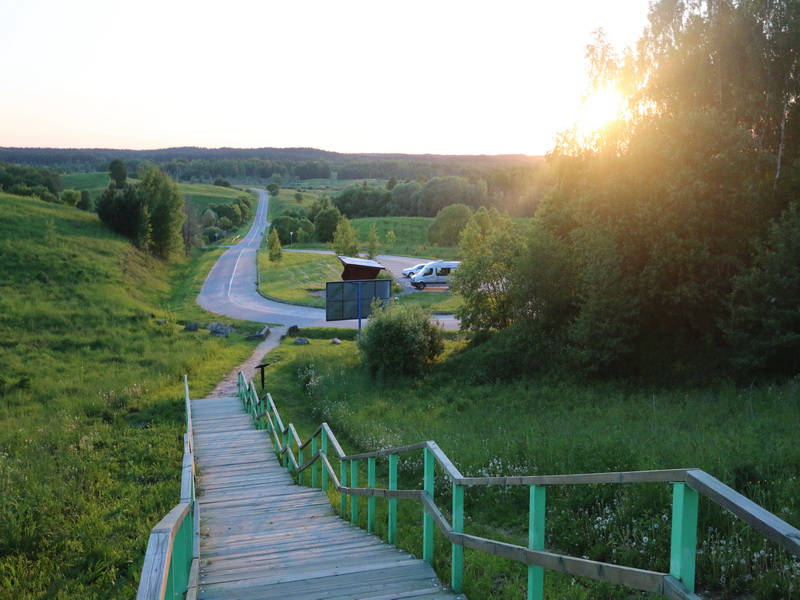
Particularly beautiful are landscapes of complex basins of lakes Strusto, Snudy, Nespish and Nedrovo. The rugged coastline forms a multitude of peninsulas, bays and coves. Braslav region - is also the edge of the islands, which in the area there are about 100. Each of them is unique in its own way. For example, on Lake Strusto is located the second largest in Belarus, the island Chaychin, the only one in the country has its own internal reservoir. It is known that on two islands of lakes Ikazn and Drisvyaty in the middle ages castle fortifications were built, and on the island of Nespish in XVII-XIX centuries there was a monastery. The largest lakes of national park Braslavskie Ozera - Driyaty, which ranks fifth in Belarus by area. The vast expanses of the lake are rich in valuable species of fish, pike, bream, carp, water is clean - suitable for swimming with numerous beaches, and large waves in windy weather create excellent conditions for sailing.
Lakes of Braslav region — this is the southern boundary of the distribution of relic invertebrates, which serve as indicators of clean water. In this regard, the lakes North Voloso and South Voloso are famous - a unique biological diversity lake system in Europe. Lake South Voloso is the fourth deepest lake in the country (40.4 m) with high water transparency - 7-8 meters in summer and more than 11 meters in winter. The South Voloso is the only reservoir in Belarus with a full set of glacial relic species of crustaceans, and the only reservoir in which the relict mizida lives (a small crustacean). Here for the first time in the world practice was discovered a unique life cycle of this species, no one previously described. In the lakes of South and North Volos, in addition to glacial relicts, lives a broad-skinned cancer, listed in the Red book of the Republic of Belarus.
In general in lakes of Braslav region there are more then 30 kinds of fish, and about 35% of birds nesting in Belarus live in the district. Lakes of national park are a great place not only for swimming and boating and kayaking, but also because of clear water with a rich underwater world, they are perfect for scuba diving, amateur fishing and sailing.
Landscapes of national park Braslavskie Ozera
Along with lakes unique landscapes national park Braslavskie Ozera are its calling card! The relief of the region is extremely diverse and is defined as lake-hilly. The territory of the park is dedicated to Braslavskaya upland and Polotskaya lowland. Most of the territory belongs to the central part of Braslav's edge glacial upland, the formation of which belongs to the end of Poozerskiy ice age.
The Northern and central part of the park is the Braslav moraine hills, which were formed during the glacial epoch of lace-land. It is dominated by landscapes of large and shallow hills, as well as water-glacial plain with coniferous forests. The South part of the park is predominantly lowland, covered with forest and swamp vegetation.
A unique feature of the landscapes of national park is the widespread use of rare glacial forms - kam and ozov. Kams are represented by groups of sandy hills with the inclusion of clays, pebbles and boulders. Near the town of Braslav, the height of the rock hills above lake Drivyaty is about 30 meters. They are mainly forested or upland meadows. But the special impression is created by lakes-stretched for hundreds of meters or even kilometers, covered with forest or juniper wasteland ridges. Their steep slopes and narrow comb-shaped tops make them look like an abandoned railway embankment. The most famous of them are located along the northeastern slopes of lake Snudy, as well as on lake Poteh near the village Slobodka.
Extremely high value in scientists-geomorphologists are landscapes of the reserve «Mezhozerny», which presents almost all forms of relief characteristic of the «Belarusian Poozerie».
The landscape of national park is also diversified by capes that go deep into the lakes, high moraine islands, as well as large boulders and their clusters. The biggest bowlder in Braslav district weighs weighing more than 40 tons, located on the Western Bank of Strusto lake. Since ancient times, locals gave their nicknames to ancient stones - God's trail, Devil's trail, Cow's stone and others.
Flora and fauna
Mainly the territory of national park Braslavskie Ozerais occupied by forests - about 67%. They are located in mostly isolated areas, the largest among them - Vidzovskiy forest cottage, forest «Belmont», Boginsky, Druiskaya forest estate and forest «Boruny». Prevail conifers - pine. Within the park there are reference areas of forest with pines, oaks and ash trees aged 100-130 years.
In general, National Park Braslavskie Ozera is home to more than 1,900 species of plants, of which about 55 species are listed in the Red book of the Republic of Belarus. Among them linnaeus north, cloudberries, crowberry black, small mollusc and others.
The fauna of the Braslav lakes national Park is both typical for the Belarusian-Baltic region and unique due to the low economic development of this territory
Within the national Park there are about 45 species of mammals, more than 200 species of birds, 12 species of amphibians, 5 species of reptiles. Typical forest dwellers are elk, wild boar, ROE deer, hare, hare, wolf, Fox, raccoon dog, otter, mink. Of the rare species that are listed in the Red book of Belarus, noted the inhabitation of lynx, brown bear, badger.
Ornithofauna is of particular value, especially birds of the Islands of large lakes, marshes and forests. Among living on the territory of the national Park of the 45 species of birds listed in the Red book: black-throated diver, Whimbrel, Golden Plover, Merlin, boreal owl, three-toed woodpecker, Finch, osprey, black stork, common crane, Eurasian bittern, Kingfisher and many others.
Commercial value are grouse, waders, and waterfowl - they make up 15 % of the total stock of game birds of Lakeland.
Due to the diversity and large population of some commercial animals Braslav lakes national Park organizes individual and group hunting tours for ROE deer, elk, beaver, hares, grouse, waterfowl and marsh game.
Park sights and excursion routes
The unique beauty of national park Braslavskie Ozera is complemented by historical, folk architecture and architecture monuments: ancient fortresses and castles, numerous temples, mansions and decorative elements of buildings, burial mounds and religious buildings, monuments to great people and events.
Braslav district is rich in geological and historical monuments - from ancient times to the present. There are many archaeological sites, including ancient settlements and burial mounds in the city Braslav, and also near the villages of Akhremovtsy, Ust'e, Dalekie, Drisvyaty, Zwirbli, Opsa, which relate to the period from the VII century BC up to the early feudalism.
Coming to Braslav, the first mention of which dates back to 1065, guests immediately get acquainted with its main attractions, a special place among which is the ancient one settlement of Zamkovaya mountain. This elevation in the center of the city, where at first a wooden castle was located, and later a powerful fortress of Prince Bryachislav Izyaslavovich, was shrouded in many mysteries and legends.
Braslavskoe settlement, surrounded by ramparts, is one of the largest in Belarus. Unfortunately, to date no ruins have survived on the territory of the castle, but beautiful stories about the wayward Princess Driva and the rigidity of the brothers-princes will take you to distant pages of history. In this point offers a unique view of the lake Drivyaty, Novati, church of the Nativity of the Virgin Mary and Uspenskaya church.
Lovers of history and antiquities will find a lot of interesting in the exposition of the Historical Museum, which is located in a wooden mansion of the 30s of the XX century. The Museum presents more than 700 exhibits, which reflect the most important pages of the history of the city and the region. The archaeological hall is rich in rare and unique women's jewelry, bones with drawings and runic inscriptions. A separate room is dedicated to the talented Braslav doctor Stanislav Narbut, who for his services buried on Castle Hill. Expositions of the Museum acquaint with the military period in the district, as well as ethnography, crafts and trades of Braslav.
Braslav Museum of traditional art (formerly Braslav house of crafts) will introduce guests to traditional crafts: weaving, wood carving, weaving, pottery, show workshops and even the process of weaving on the cross. The museum has a gift shop.
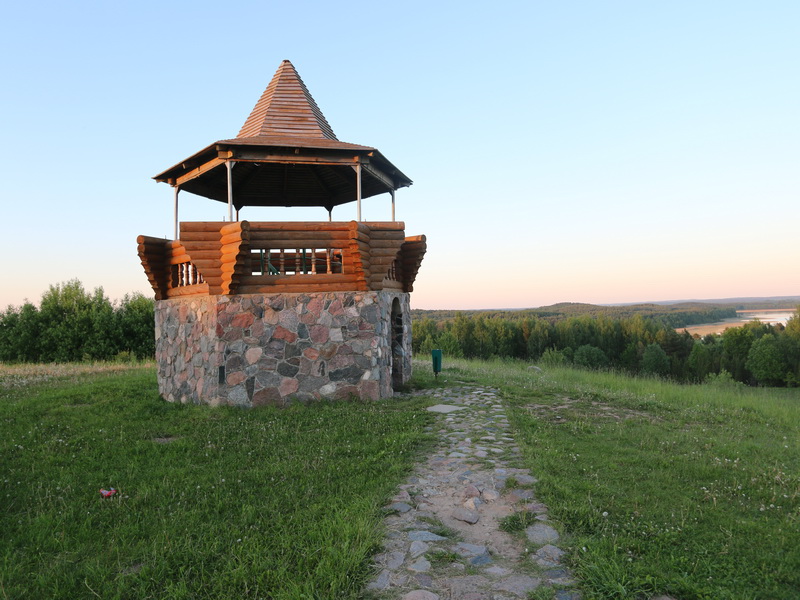
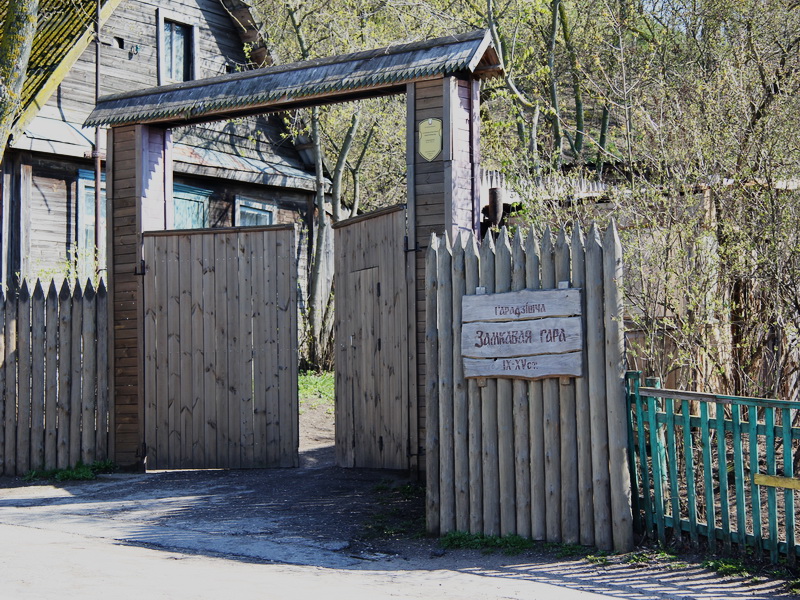


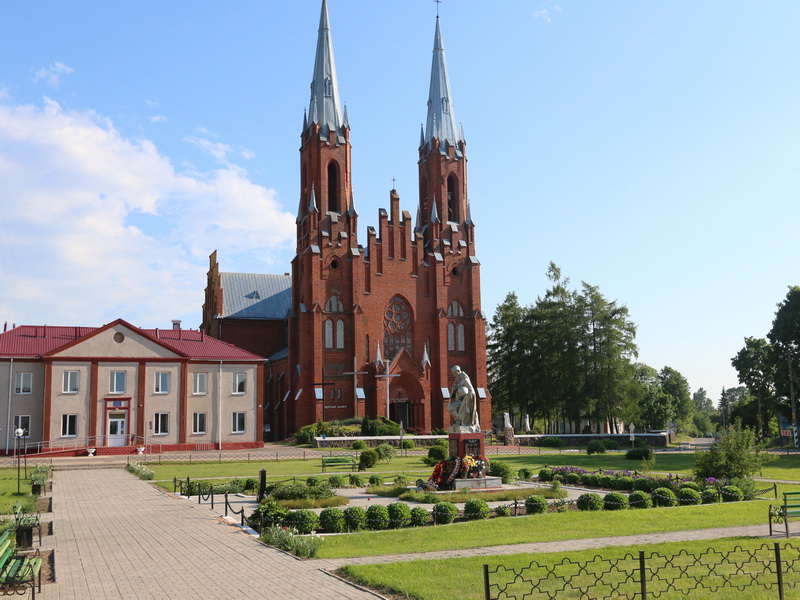
The best observation point of Braslav district - mountain Mayak (174 meters) - has gained great popularity among tourists. This is a unique natural object - glacial kam, located between lakes of Snuda and Strusto, from the top of which there are picturesque natural landscapes and lake surfaces. A nice bonus will be the fulfillment of your most cherished desire, you need to correctly calculate the number of steps leading to the top of the mountain.
Among the most ancient monuments of Braslav is worth noting Borisov stone found in the riverbed of Druyki in the urban village Druya. This is a rare epigraphic monument of the XII century, which survived only a few in Belarus. On a large boulder carved six-pointed cross and the inscription.
Within national park are especially scenic places famous for agro Slobodka - here are ozove ridge with two ancient settlements, Devil's pit, Leybova mountain, round lake called «God's eye». Real decoration of Slobodka – white stone church of God's Providence (The heart of Jesus), which is valued for the iron shackles of the doors, made with floral motifs, and bright painting of the interior of the temple. Artists from Vitebsk did not leave on the surface of the walls of a square meter, not covered with biblical scenes and ornaments. According to experts, the forging of Church doors in Slobodka is one of the best examples of blacksmithing skills in Belarus.
Another outstanding temple is located in the town of Vidzy, 40 km from Braslav. Here is the neo-gothic church of the Holy Trinity, which is considered one of the highest in Belarus, because its spires reach 59 meters. During the First World war, the church was badly damaged by the aimed fire of Russian artillery. In memory of the fighting battles in the walls of the temple during the restoration of built into it shells.
Get the most complete impression of the cultural heritage of Braslav region can be part of the excursion Braslavskiy kaleidoscope.
For those who prefer the contemplation of the nature of national park Braslavskie ozera organizes walks on ecological trails of the mountain Mayak, Slobodkovskaya ridge, Belmont Park, visit open-air cages with wild animals, typical for the Belarusian Poozerie, as well as safari tours to monitor elk, boar, roe deer, beavers, badgers, foxes, raccoon dogs, wolves and other animals.
Aims and goals of national park Braslavkie Ozera
National Park Braslavskie ozera performs environmental, scientific, recreational, tourist and economic activities, including forest management (including side use of the forest, wood processing), hunting, agriculture and fisheries. Depending on the value of natural complexes in the territory of national park, functional zones with the appropriate regime of nature protection are allocated:
- Protected area - 5.3% of the total area where smoking is prohibited all activities except scientific research and protection measures of the protected mode.
- Regulated-use zone – 70,1% of the total area with limited forestry and hunting activity, in the volumes established by projects of the organization and development of forest and hunting economy.
- Recreation area – 4.2% of the total area where tourist activities are allowed, accommodation of recreational facilities in accordance with the environmental legislation of the Republic of Belarus.
- Economic zone – 20,4% of the total area occupied by administrative buildings and structures of the national Park.
- preservation of the natural complex of Braslav lakes group as a historically formed landscape and genetic fund of flora and fauna typical of the Belarusian Poozerie;
- preservation in a natural state of reference and unique natural complexes and objects which are in the territory of national park Braslavskie Ozera, and also biological and landscape diversity;
- organization and implementation of environmental protection measures in national park, ensuring compliance with the established regime of protection and use of national park;
- organization of ecological education and upbringing of the population and promotion of environmental protection;
- organization of tourism, recreation and other recreational activities, as well as public health;
- carrying out the scientific researches connected with development and introduction of scientific methods of preservation of biological diversity, natural and historical and cultural complexes and objects in the conditions of recreational and economic use, an assessment of an ecological situation in the region; assistance to carrying out research works;
- organization of environmental monitoring;
- preservation of cultural heritage (objects of ethnography, archeology, history, paleontology, etc.);
- conducting the complex economy on the basis of traditional methods and advanced achievements of natural resource management;
- implementation of economic and other activities in accordance with the established regime of protection and use of the territory of national park Braslavkie Ozera.
Useful links
- Program of excursion tours in national park Braslavkie Ozera (For organized groups resting in the recreation centers of national park Braslavkie Ozera)


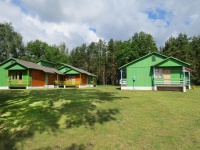





 Braslavskiy kaleidoscope
Braslavskiy kaleidoscope